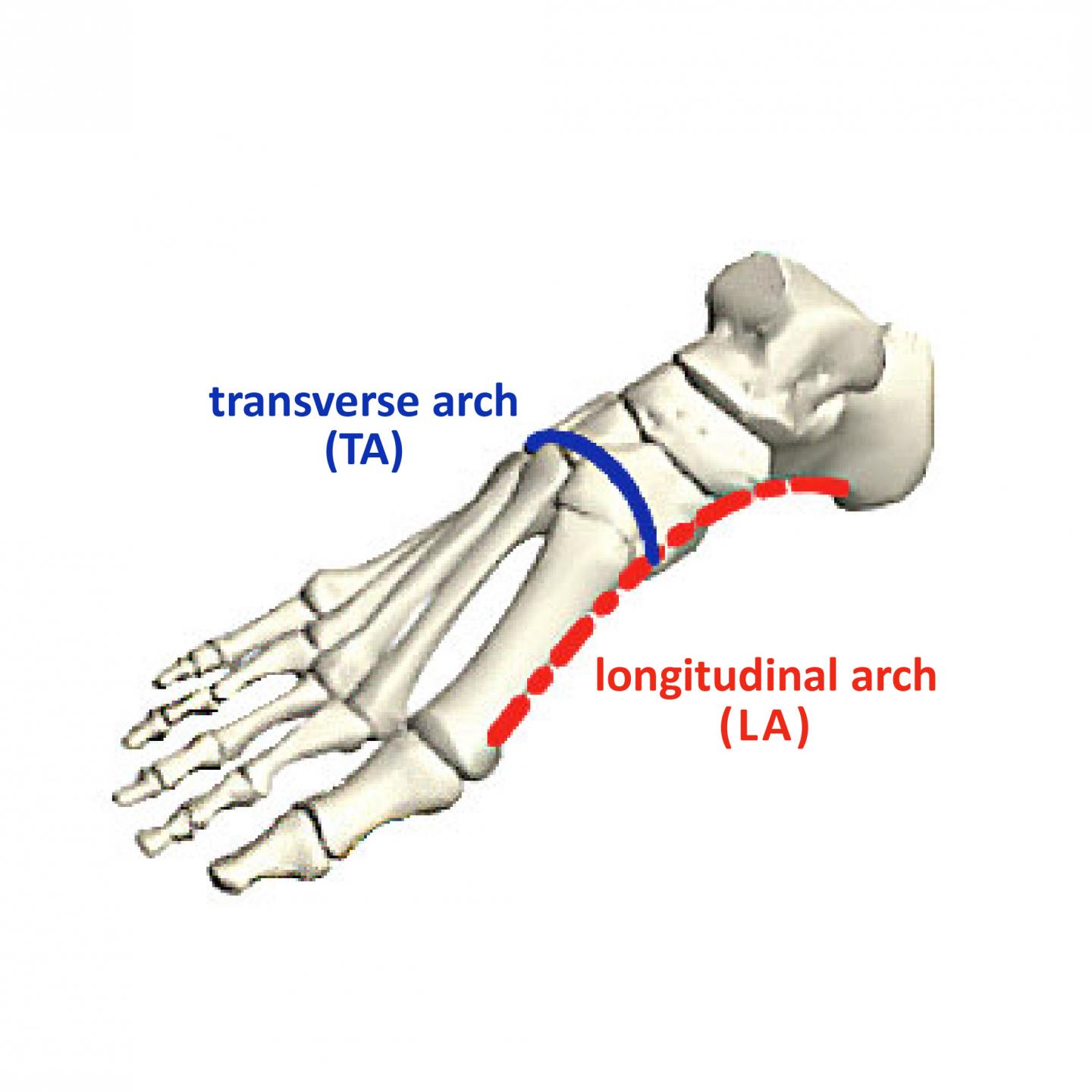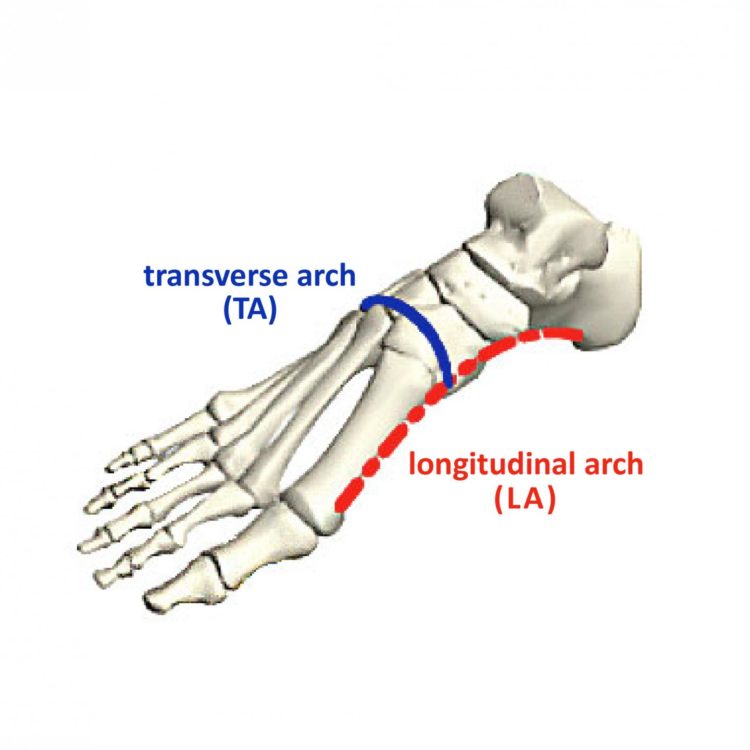A little-studied human foot arch is important for walking and running, finds new study

Credit: OIST
Many of us take our feet for granted, but they have a challenging job in the biomechanics department. When we push off with the ball of the foot, the force we apply exceeds our body weight, causing the middle of the foot to bend. Yet the foot maintains its shape because it is stiff enough to withstand this force. Researchers have long debated what gives the midfoot its stiffness. Now, a new study, published in Nature, has shed light on the importance of a little-studied structure called the transverse arch (TA), which runs across the foot.
“Having a firm understanding of how the human foot works has several real-world applications,” said Professor Mahesh Bandi, from the Nonlinear and Non-equilibrium Physics Unit at the Okinawa Institute of Science and Technology Graduate University (OIST), who co-led the study. For example, he explained, the current definition of flatfoot disorder is solely based on the well-studied medial longitudinal arch (LA), which runs the long way down the foot, and doesn’t consider the transverse arch (TA). What’s more, he adds, this research could also help with the design of robotic feet and point to clues about how bipedal walking evolved.
Previous studies have found that 25% of the foot’s stiffness is conferred by the LA. The researchers theorized that the TA contributes even more to this effect, much like how rolling a floppy piece of paper makes it harder to bend. Using a protocol developed with the help of computer simulations, and experiments on plastic and mechanical models, the researchers found that about half of the stiffness in human cadaveric feet is controlled by the TA.
Measuring the stiffness of the human foot
To determine what influences midfoot stiffness, Professor Bandi and colleagues created both computer simulations and plastic models of the midfoot and measured how much force was required to bend them a certain amount.
“We found that the plastic models and simulations with more pronounced TAs were stiffer and less susceptible to bending than flatter ones,” said Professor Bandi. “In contrast, on these models, an increase in the curvature of the LA had little effect on the stiffness.”
They then performed bending tests on mechanical models of the foot, which varied in length, thickness and TA curvature. As with the simulations and plastic models, they found that the mimics with more pronounced TAs were stiffer to bend. Finally, they found that cutting the TA tissues in feet from human cadavers donated to research – while leaving the LA tissues intact – reduced the feet’s stiffness by about a factor of half.
In the steps of our ancestors
Professor Bandi and colleagues also looked at the role the TA played in human evolution. Researchers know that the feet of vervet monkeys, macaques, chimpanzees and gorillas are substantially flatter than human feet, and can only partially stiffen. Meanwhile, species within the genus Homo, like us, all have a pronounced TA, enabling effective walking and running.
By comparing the curvature of the TA in humans and non-human primates to fossils of earlier hominin species, Professor Bandi and colleagues measured where a prominent TA first appeared in the fossil record. “Our findings suggest that a human-like TA predates the genus Homo by around 1.5 million years and was a vital component in the evolution of modern humans. This shows that in future tests, researchers need to analyze both arches, not just the LA,” said Professor Bandi.
This research was jointly led by Professor Bandi, Professor Madhusudhan Venkadesan from Yale University and Professor Shreyas Mandre from the University of Warwick. It was funded by a Young Investigator Grant from the Human Frontier Science Program.
###
Media Contact
Tomomi Okubo
[email protected]
Original Source
https:/
Related Journal Article
http://dx.





